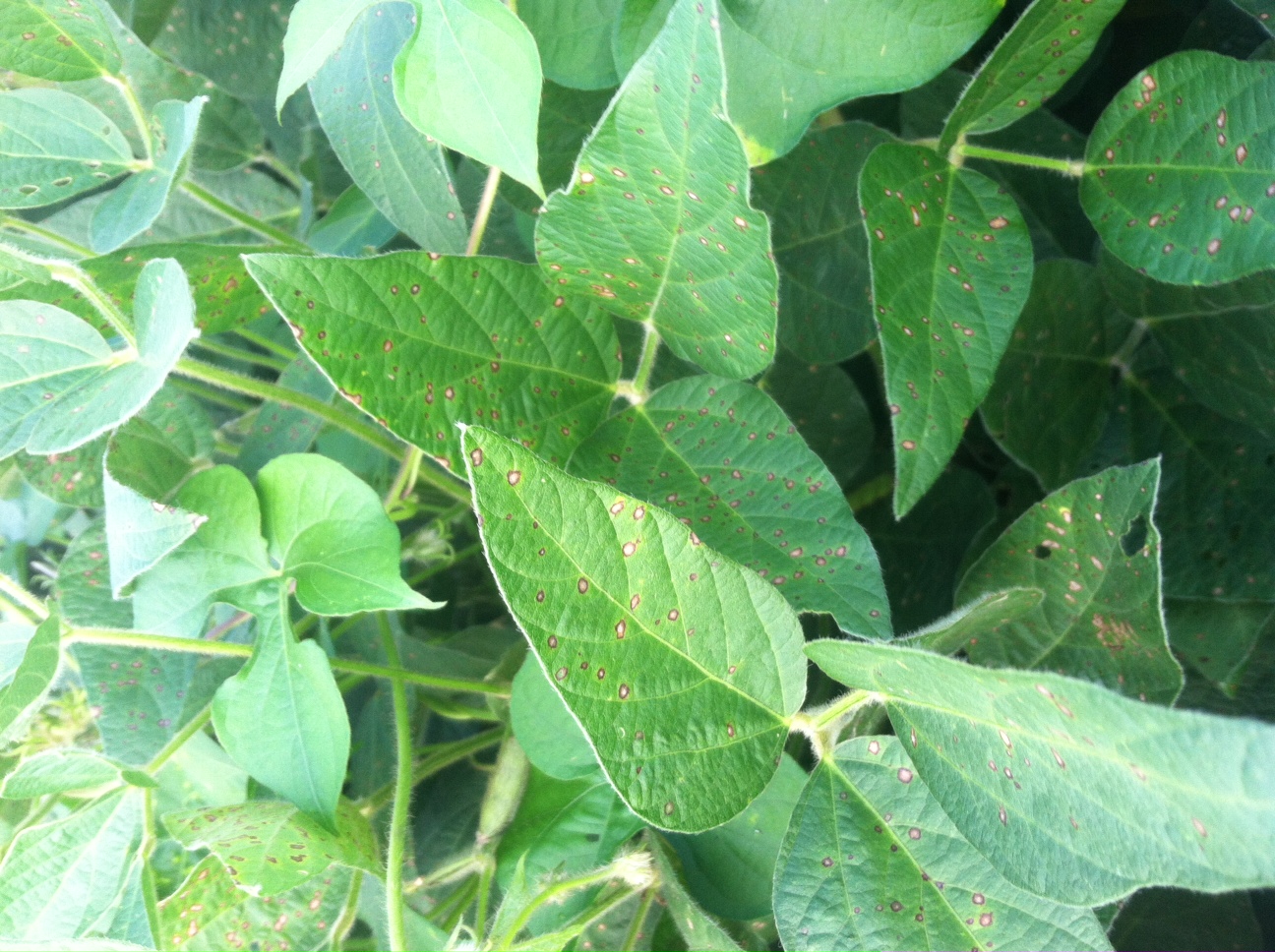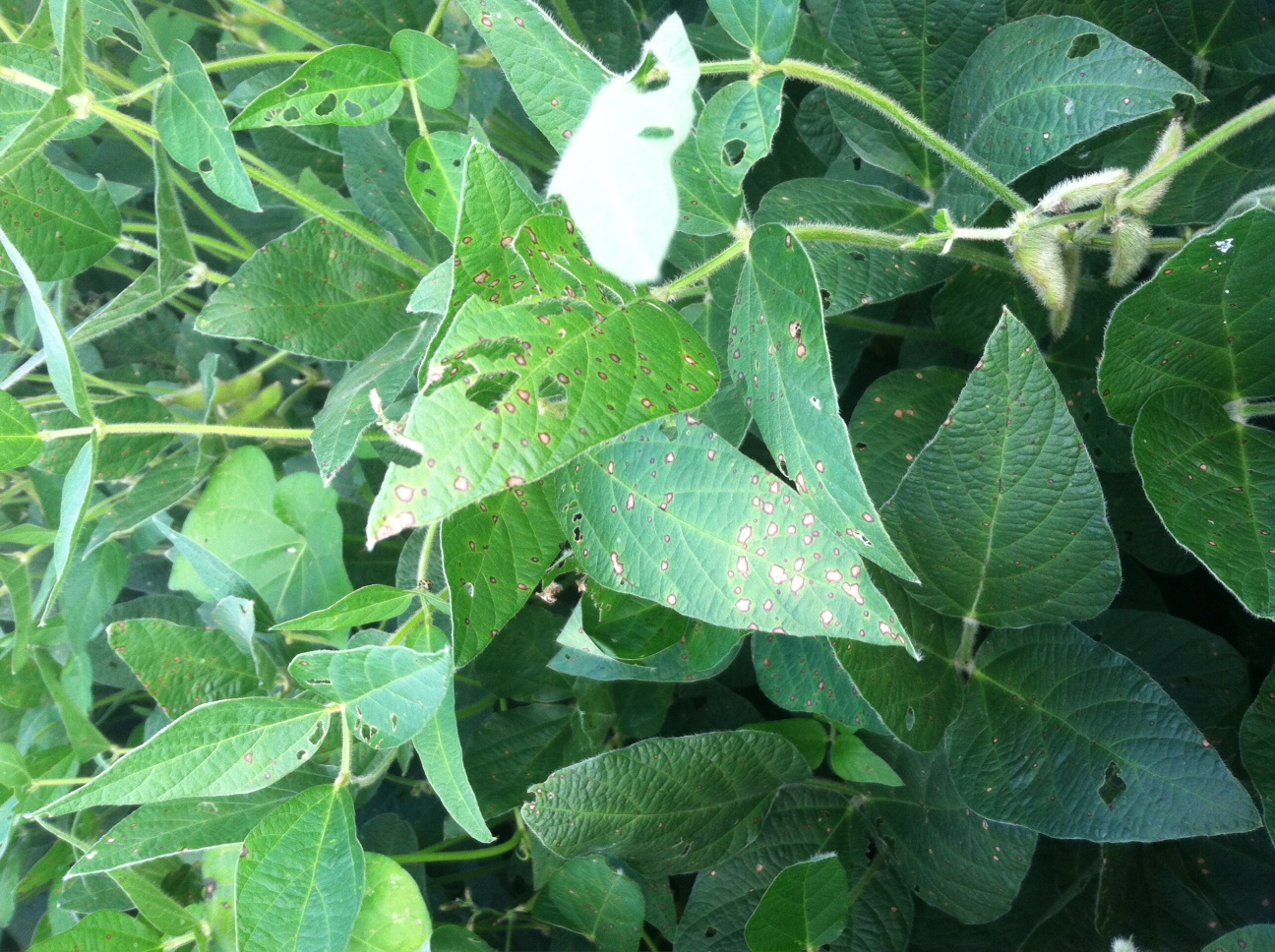I have received numerous reports of soybean fields with moderate to severe frogeye leaf spot (FLS) over the past several weeks. In most cases, the disease is showing up in fields planted to a FLS susceptible variety and/or in fields that have been in continuous soybean. FLS can cause significant yield loss in susceptible varieties, so fungicides may be needed to control the disease in high risk fields (see accompanying blog post “Foliar fungicide applications in soybean”). Unfortunately, FLS isolates resistant to strobilurin (QoI, Group 11) fungicides have been confirmed from some locations in Virginia, so fungicide control failures can occur if the proper fungicide chemistries are not selected as illustrated in the pictures below. A soybean fungicide efficacy table with ratings based on data from multiple field trials in multiple states can be downloaded below. We are currently surveying fields in Virginia for strobilurin-resistant FLS and will have data on the frequency and distribution of resistance later this year. In the meantime, it should be assumed that FLS will not be controlled by strobilurin fungicides, and other fungicide chemistries (e.g. triazoles) should be applied in fields with FLS either alone or in combination with a strobilurin. Keep in mind that strobilurin fungicides still provide good control of other diseases that can occur in soybean.


